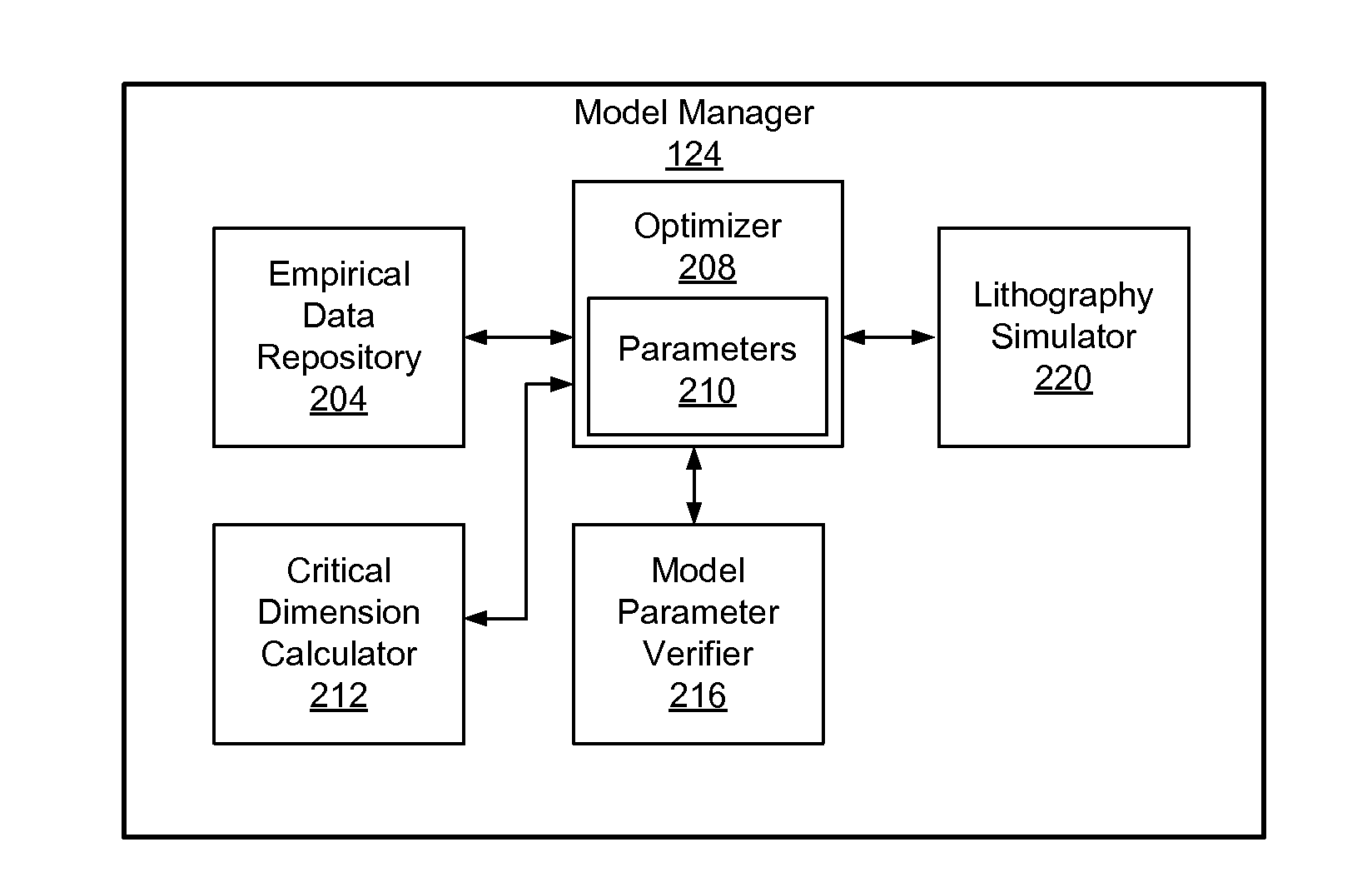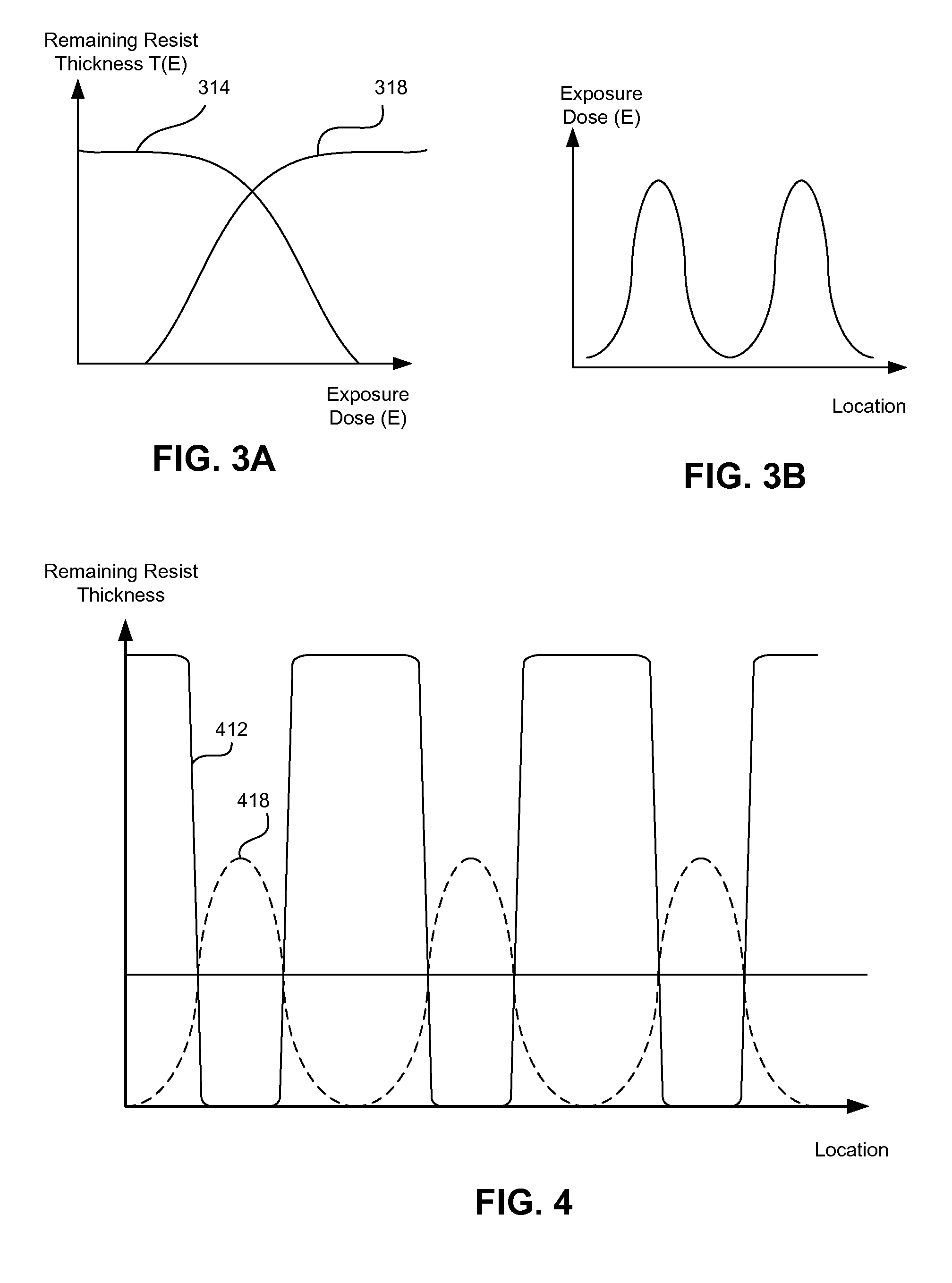Fast Photolithography Process Simulation to Predict Remaining Resist Thickness
a photolithography and process simulation technology, applied in the field of electronic design automation, can solve the problems of inability to accommodate a large number of process parameters, physical models can be computationally complex to implement, and become more difficult to predict the outcome of such physical and chemical interactions in the process
- Summary
- Abstract
- Description
- Claims
- Application Information
AI Technical Summary
Benefits of technology
Problems solved by technology
Method used
Image
Examples
example method
of Optimizing Parameters for a Lithography Model
[0051]FIG. 5 is a flowchart illustrating a process of generating parameters for a lithography model, according to one embodiment. The model manager 124 receives 510 an aerial image for forming a test pattern on a wafer. Based on the received aerial image and equation (2), the model manager 124 computes a distribution of exposure energy dose E(x,y) at locations across the wafer.
[0052]The empirical data corresponding to the test pattern are received 514 and stored in the empirical data repository 204. The empirical data may include critical dimensions CDE measured from wafers fabricated to include the test pattern.
[0053]The optimizer 208 initializes 518 the parameters 210 for the lithography model. In one embodiment, the lithography model is represented by equations (3) and (4). The parameters 210 include C0 through CN (for computing Ethresh) and sigmoid slope value a. The critical dimension calculator 212 computes 522 critical dimension...
example simulation
Based on Lithography Model
[0063]FIG. 7 is a flowchart illustrating a process of simulating a photolithography process, according to one embodiment. The process of performing simulation using the lithography model is substantially identical to the process of computing the critical dimensions as illustrate in FIG. 6 except that the contour and / or distribution of the remaining resist thickness are obtained as end results instead of the critical dimensions.
[0064]The lithography simulator 220 receives 722 an aerial image for simulation. The lithography simulator 220 computes 724 the exposure energy dose distribution E(x,y) based on the received aerial image and equation (2).
[0065]The lithography simulator 220 also receives 728 the parameters 210 from the optimizer 208. The lithography simulator 220 further receives 732 process variables associated with the simulated photolithography process. Based on the parameters and the process variables, the lithography simulator 220 computes 736 the...
PUM
 Login to View More
Login to View More Abstract
Description
Claims
Application Information
 Login to View More
Login to View More - R&D
- Intellectual Property
- Life Sciences
- Materials
- Tech Scout
- Unparalleled Data Quality
- Higher Quality Content
- 60% Fewer Hallucinations
Browse by: Latest US Patents, China's latest patents, Technical Efficacy Thesaurus, Application Domain, Technology Topic, Popular Technical Reports.
© 2025 PatSnap. All rights reserved.Legal|Privacy policy|Modern Slavery Act Transparency Statement|Sitemap|About US| Contact US: help@patsnap.com



